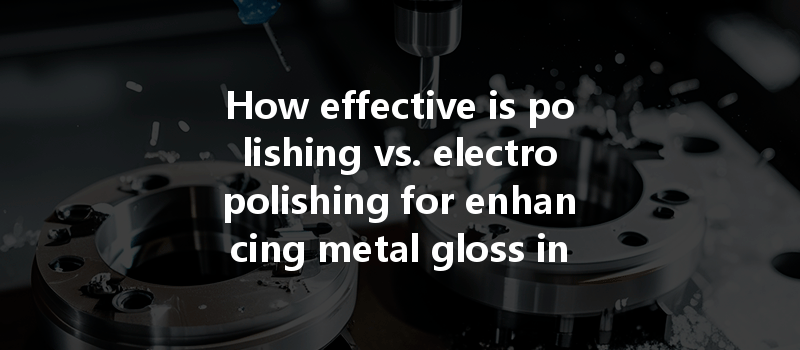Did you know that the surface finish of a machined part can influence its performance, lifespan, and even aesthetic appeal significantly? In industries ranging from automotive to aerospace, achieving the perfect finish on metal components is crucial, and two common methods—polishing and electropolishing—are at the forefront of this challenge. This blog delves deep into these techniques, exploring their effectiveness in enhancing metal gloss and providing detailed solutions to help manufacturers choose the best option for their unique applications.
Understanding the Basics: What Are Polishing and Electropolishing?
Before diving into comparison and applications, let’s first define polishing and electropolishing.
Polishing
Polishing is a mechanical process involving the use of abrasive materials to smooth the surface of a metal part, removing imperfections and thereby enhancing its gloss. It can be performed using various tools ranging from simple hand-held devices to sophisticated automated machinery designed for high volume production.
Types of Polishing:
Electropolishing
Electropolishing, also known as electrochemical polishing, is an electrochemical process where metal parts are submerged in a solution and an electric current is applied. This current removes a thin layer of material from the surface, effectively smoothing out imperfections and improving the gloss finish.
Key Advantages of Electropolishing:
The Importance of Surface Finish in CNC Machining
Achieving a high-quality surface finish is important for several reasons:
Comparative Analysis: Polishing vs. Electropolishing
Polishing:
Electropolishing:

Applications of Polishing Techniques in CNC Machining
In automotive applications, both techniques are crucial. Polishing is often used on engine parts and decorative elements, while electropolishing is favored for components requiring enhanced corrosion resistance, such as fuel lines and exhaust systems.
Electropolishing’s ability to produce smooth, non-porous surfaces makes it particularly valuable for parts in aerospace applications where weight reduction and performance are critical.
Very stringent regulations regarding biocompatibility mean that electropolishing is often the preferred choice for medical devices made from stainless steel due to its superior cleanliness and corrosion resistance.
Electropolishing eliminates surface contaminants that could harbor bacteria, making it ideal for applications in food processing where hygiene is paramount.
Choosing the Right Method for Your CNC Machining Needs
When deciding between polishing and electropolishing, various factors come into play:
Detailed Solutions for Enhanced Gloss and Performance
No matter which method you choose, regular maintenance of polishing and electropolishing equipment is crucial for achieving optimal results. Follow manufacturer guidelines for cleaning and equipment upkeep.
Invest in training staff on both polishing and electropolishing best practices to ensure a skilled workforce operates the machinery effectively.
Future Trends in Surface Finishing Technologies
The field of metal finishing is continuously evolving with advancements in technology. New developments promise improved efficiency, sustainability, and surface quality. Techniques such as laser polishing and robotic polishing systems are emerging, offering alternatives to traditional methods.
The debate between polishing and electropolishing is more than just a choice of technique; it underscores the intricate relationship between surface finish and product performance in CNC machining. This blog explored how the right finishing technique can enhance gloss, improve corrosion resistance, and elevate a part’s overall functionality.
Understanding the differences, applications, advantages, and associated costs of polishing versus electropolishing is essential for manufacturers aiming to optimize their production processes. As industries continue to demand higher precision and quality, investing time in research and training on finishing technologies becomes vital.
In a world where the tiniest details can dictate product performance, the decision about how to finish a part is not one to be taken lightly. It’s an area worth thinking about—where your choice can translate to better products, greater customer satisfaction, and, ultimately, enhanced business success.
Whether you’re refining automotive components or crafting intricate aerospace parts, the shine of precision through proper surface treatments will undoubtedly reflect on the quality of your work.






